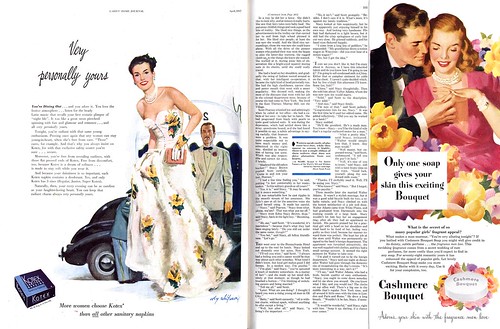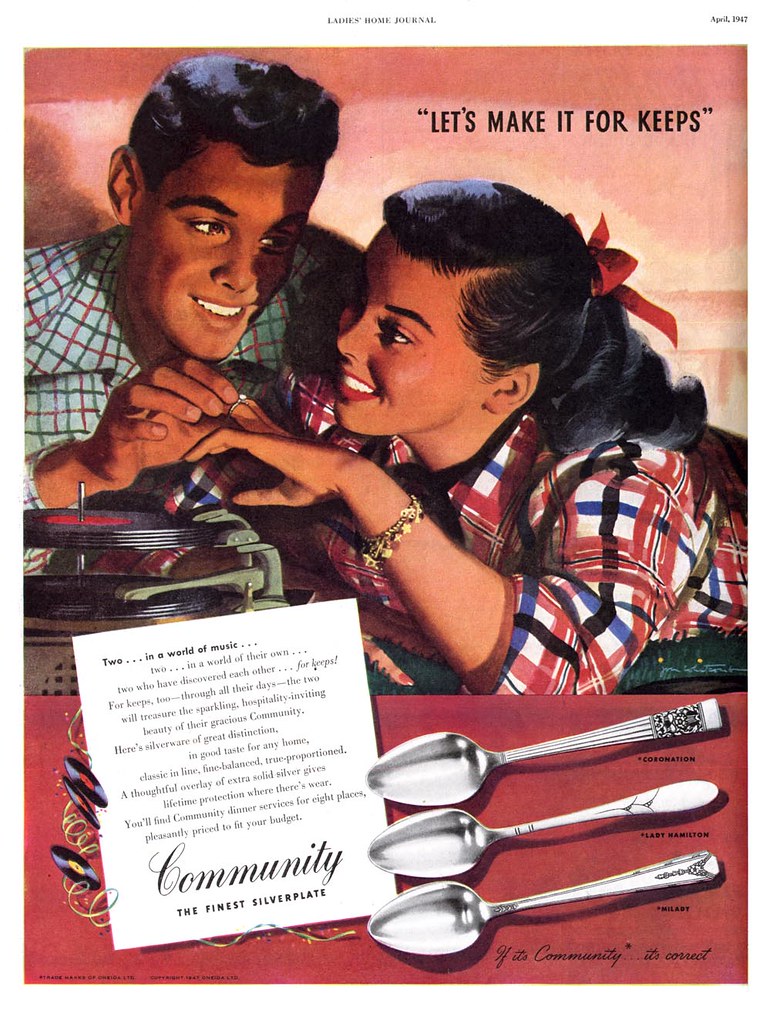The same April 1947 issue of Ladies Home Journal that held the Sundblom illustration above of the sad little boy also contained quite a bit of work by a former Sundblom studio artist named Coby Whitmore. Not only did Whitmore do a story illustration just a few pages away from the one by his old boss, not only did he have a full page ad in that issue...

...but further along in that magazine master and student illustrated ads on the same spread. I wonder how the two men would have felt about seeing each other's work juxtaposed like that? While Whitmore was still a few years away from becoming one of the principle drivers of the "New School" 50's style, and Sundblom's days of popularity were far from over, seeing the work of these two highly influential artists in this context helps clarify the transition period between the two schools.

And, as if to close the circle, even further on in that same issue of Ladies Home Journal, this full page ad by Jon Whitcomb (below). I'm not sure if Coby Whitmore had already joined the Cooper Studio by 1947 or if he was soon to join, but he and Whitcomb would, within only a few years of this work, become the twin pillars of the premier art studio in 1950's America and set the tone of romance illustration for a generation.

Leif, you are a true historian. I love the way you have identified and described the shifting tectonic plates in this business. Nobody else would have spotted the Sundblom / Whitmore hand off.
ReplyDeleteI would also add that lining up the Sundblom, Whitmore and Whitcomb pictures really drives home (at least for me) what an inferior artist Whitcomb was. He may have been commercially successful, but he couldn't lay a glove on the other two.
Thank you David! You can't imagine how complimented I feel having you say that. :-)
ReplyDeleteYes, you're so right about Whitcomb's skills -- but I suppose one has to consider the nature of applied art, and credit the abilities of the successful practitioner, in this case, Whitcomb's unmatchable formula.
A bit like those composers who inately understand how to write a hit pop song...